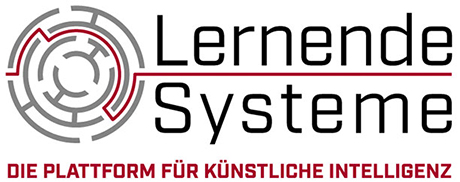
Ms Falk, what potential do data and AI-based value-added networks offer? What challenges need to be considered during implementation?
Svenja Falk: Artificial Intelligence heralds a new phase in the creation of value. However, companies are analyzing very precisely what value creation is feasible. In the case of data and AI-based value-added networks, we are still at the very beginning. One of the biggest challenges is that the value proposition of AI has not yet arrived in most companies. While we have come to understand that value creation is increasingly shifting towards digital services, scaling and monetization are not the answer. Bringing the physical and digital worlds together will play a decisive role in international competition in the future. It is therefore essential that we understand the core architecture of business models that enable data-based value creation. It is important to look at the potential not only from a business perspective, but also from an economic perspective. To do this, these technological innovations must be adapted as broadly as possible in order to realize economic benefits.
The question of monetization is the decisive challenge for the further development of digital value-added networks - regardless of the size of the company. This challenge affects not only Germany, but many countries worldwide - including China, for example, which has already made great progress in scaling up such business models. In addition, further challenges arise in the economic use and long-term integration of partners within such networks, which concern technical issues such as interfaces, data formats and interoperability of the systems involved, but also trust in the partners involved and the security of the systems.
Many medium-sized companies are still hesitant about introducing and implementing data and AI-based applications. Why is it worthwhile for them to get involved?
Svenja Falk: For SMEs, too, data- and AI-based applications offer great potential for increasing production efficiency, preventing production losses and reducing logistical bottlenecks. If you take a look at production, maintenance management or quality control in companies, for example, it becomes clear that more SMEs are already using data-based value creation today than one might think. There are already a whole series of interesting practical case studies, which are also presented on the Map on AI of Plattform Lernende Systeme. Use cases for regional cooperation, for example between local bakeries, are of particular interest to small and medium-sized enterprises. Before implementation, however, it must first be clearly defined why such AI- or data-based value creation can be worthwhile for a company, how it fits in with the corporate strategy and whether the assumed potential added value is realistic. If we look at the concrete example of a bakery, for example, it becomes clear that the aim here is to optimize supply and demand in a regional market. The aim is to be able to meet consumer demand while at the same time having to destroy fewer overproduced products. This may sound trivial at first, but it is extremely attractive for companies to be able to balance markets. Of course, this can also be applied to other applications, for example to minimize downtimes within a company with the help of new technologies, to increase quality standards or to gain a better understanding of the predetermined breaking points in a company's processes.
What should companies consider when implementing such value networks?
Svenja Falk: "Buy, build or borrow"? It is very important for companies to decide: Which strategy do I pursue as a company in order to optimize and exploit the potential for me? In this respect, it might be useful for a single, small company to consider forms of consortia or cooperation with other service providers or smaller companies. After the strategic evaluation of why data- and AI-based applications are implemented in the company, the second important step is to define a strategy for implementation. Here, costs as well as personnel considerations play a role in deciding how such an application can be sustainably implemented, operated, analysed and made usable for the individual company in the long term. The initial consideration must be independent of the size of the company: What can this technological innovation be of use to me? What is the benefit promise for my customers, for my employees, but also for my own company goals? The next step is to design the targeted implementation of these technologies.
